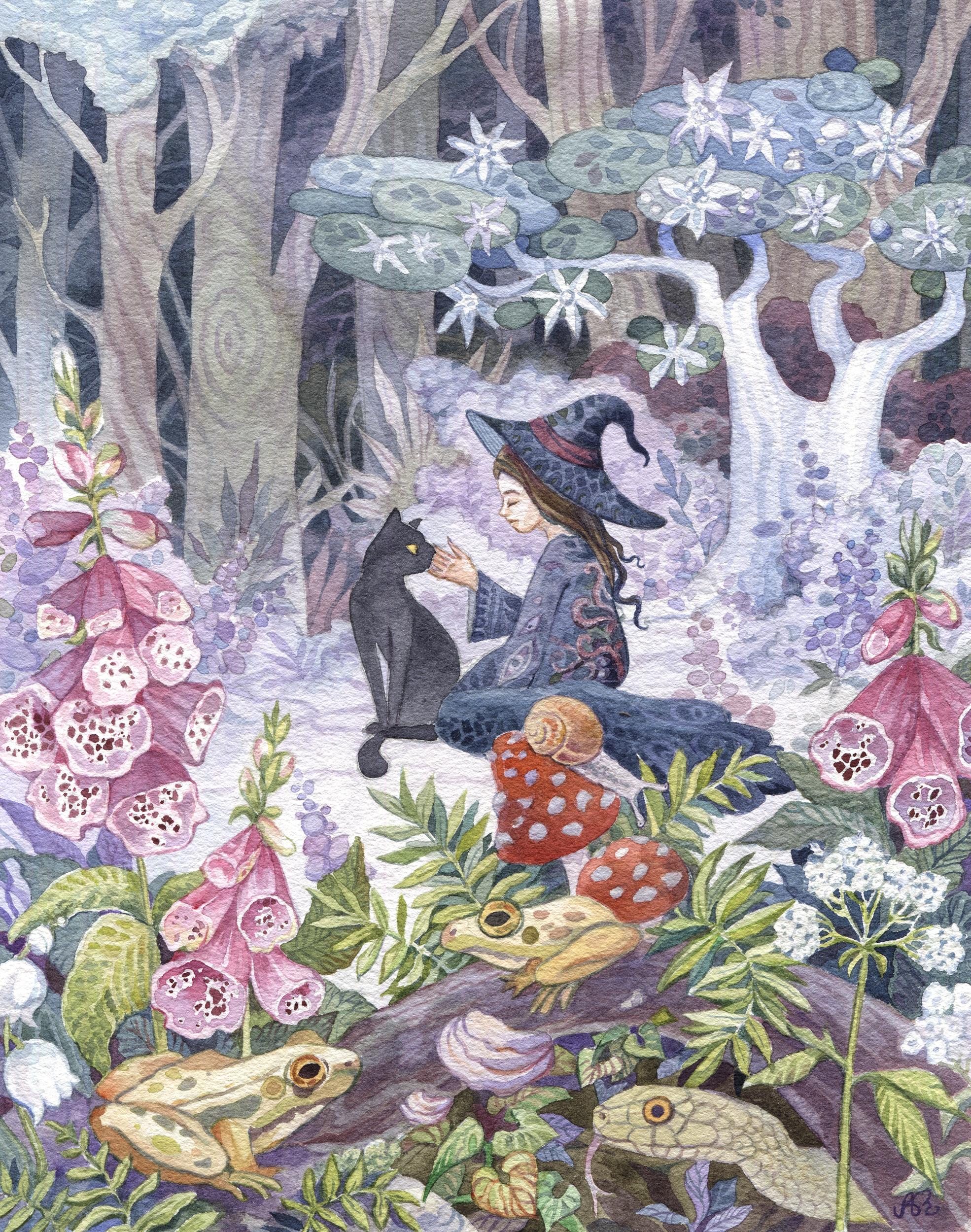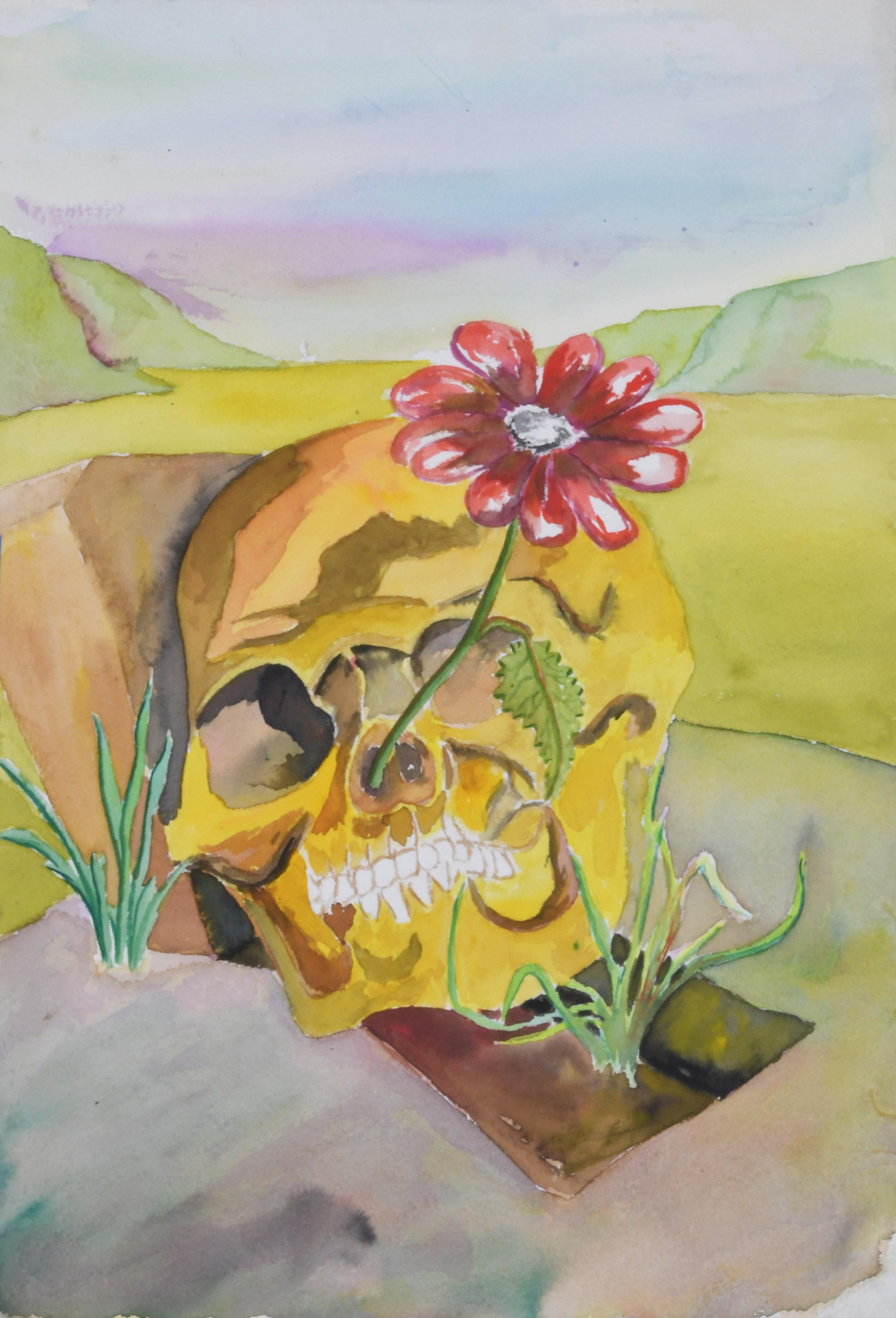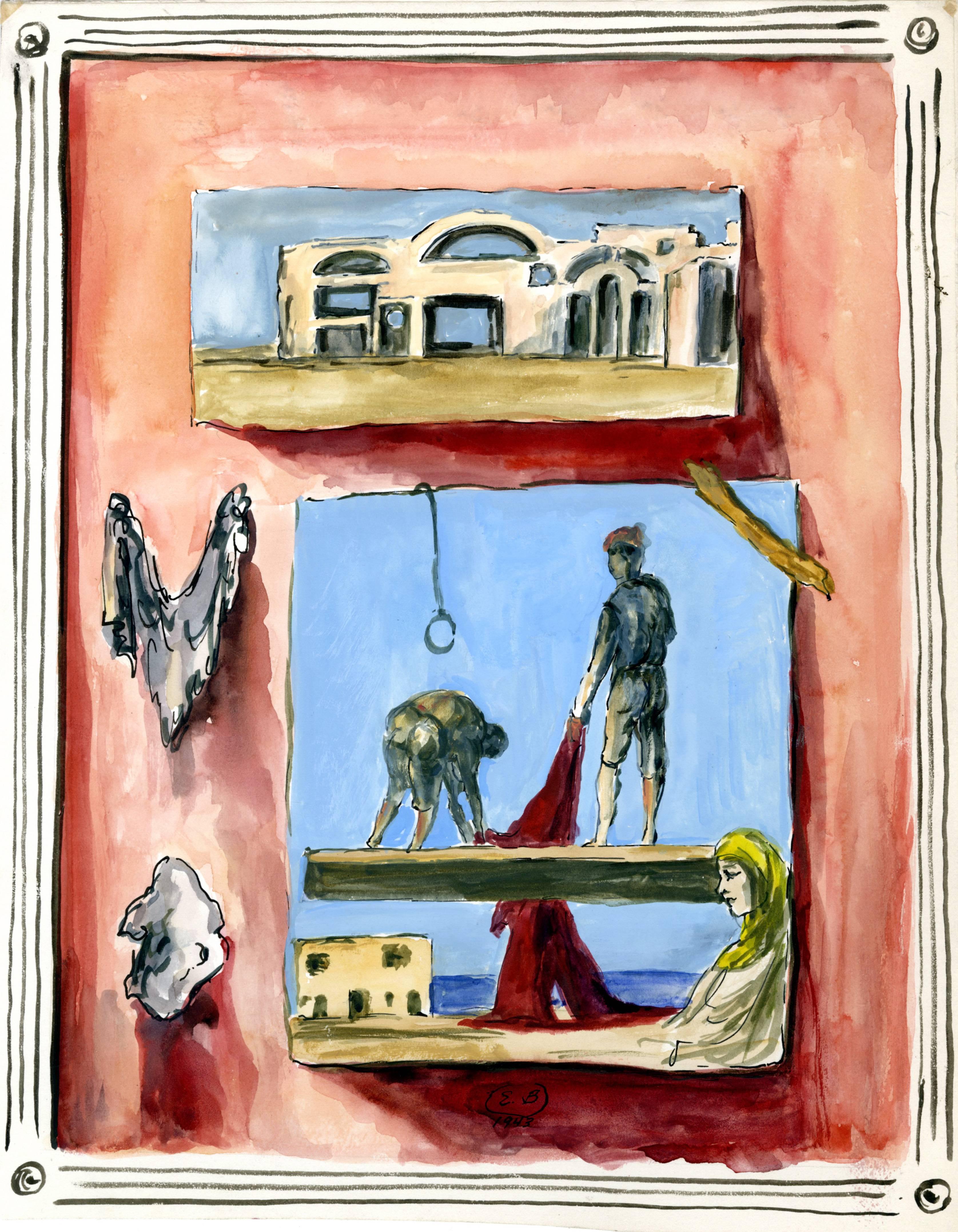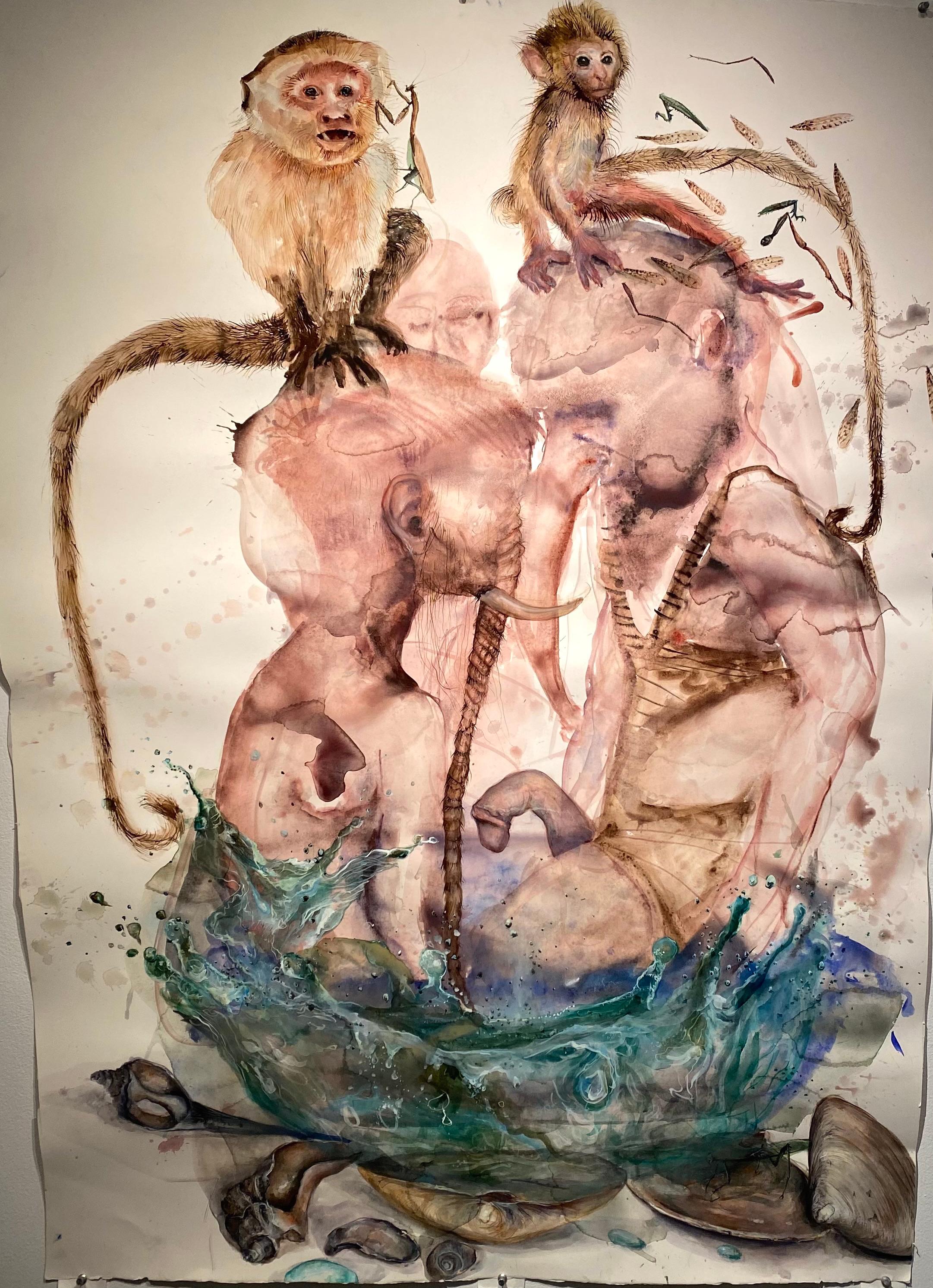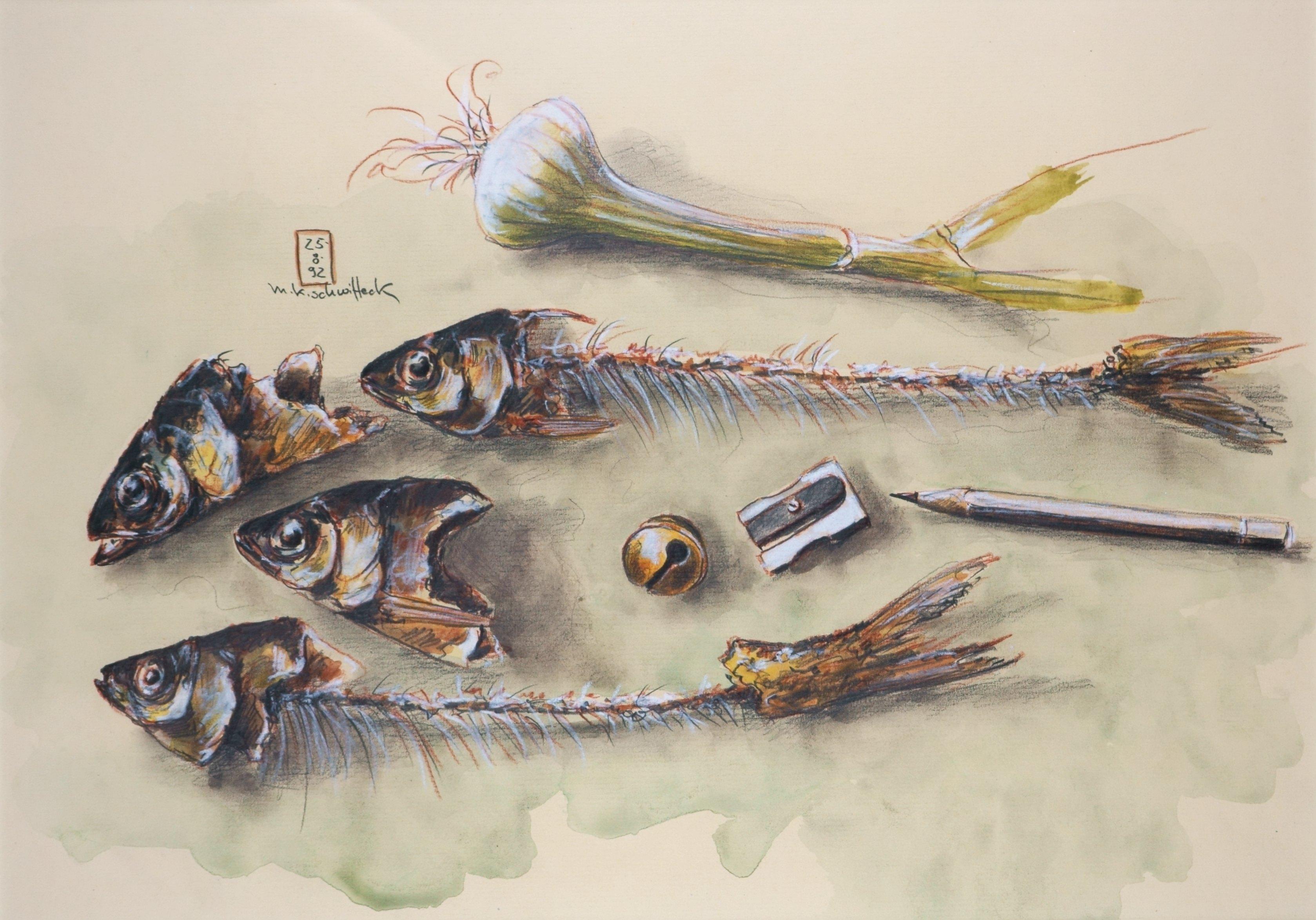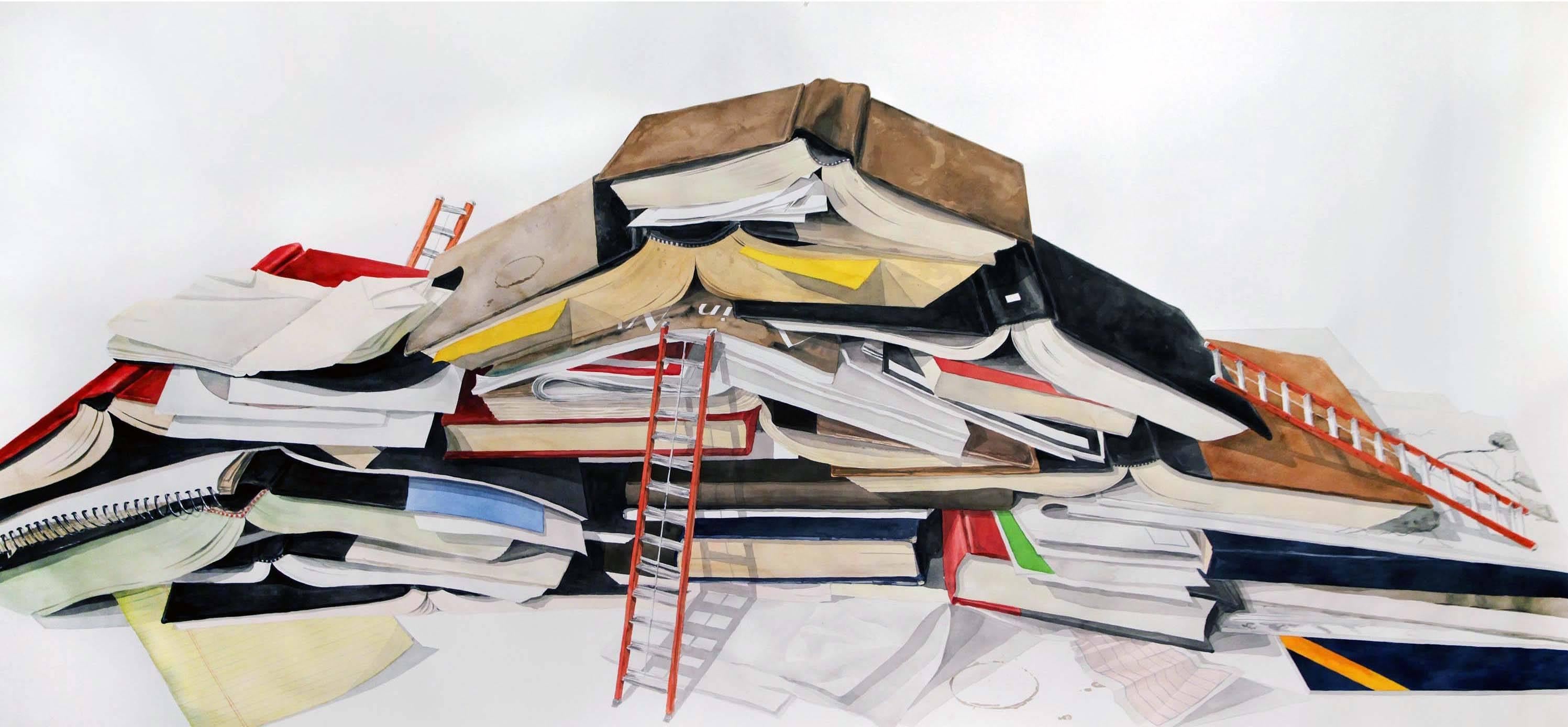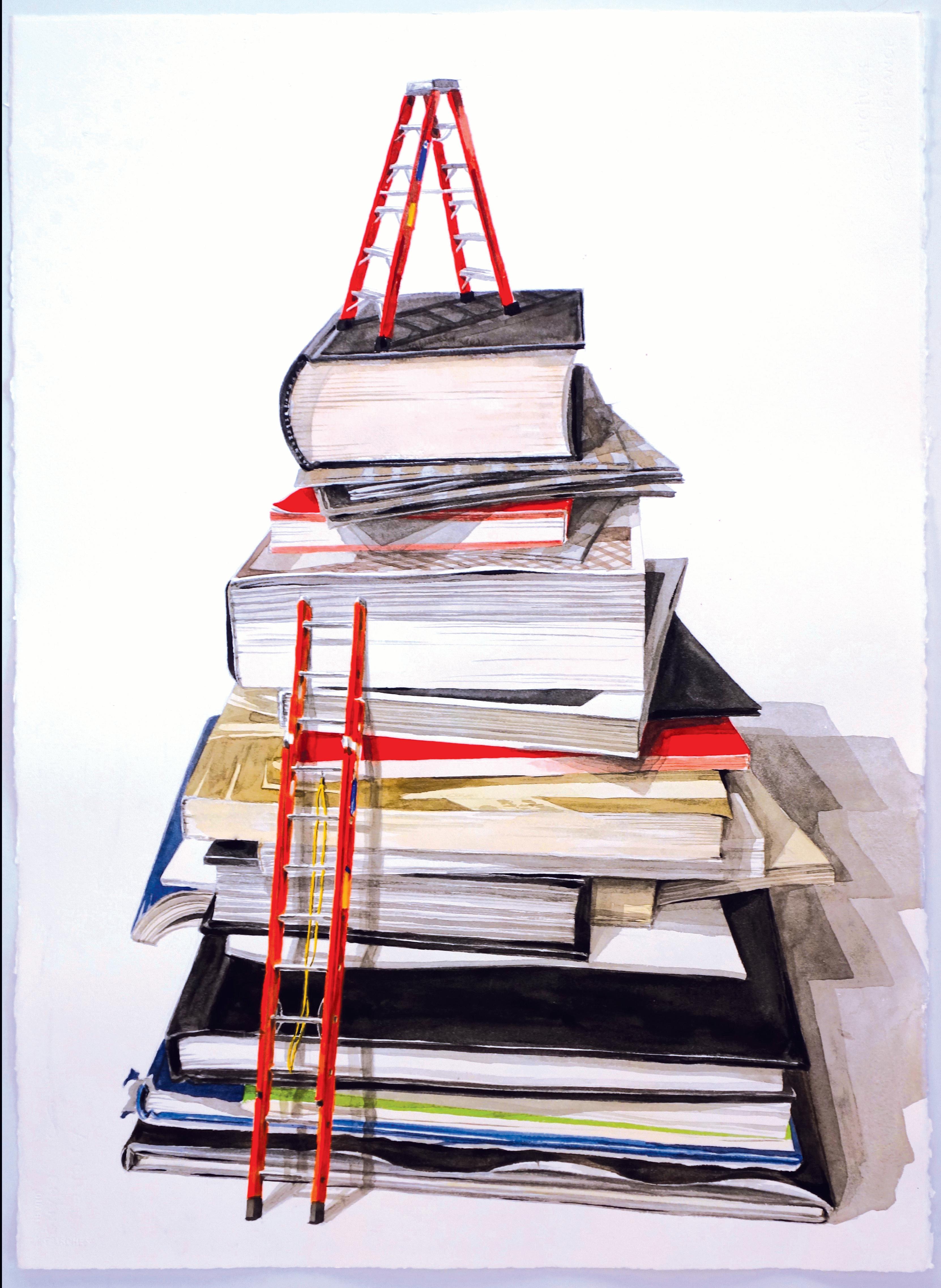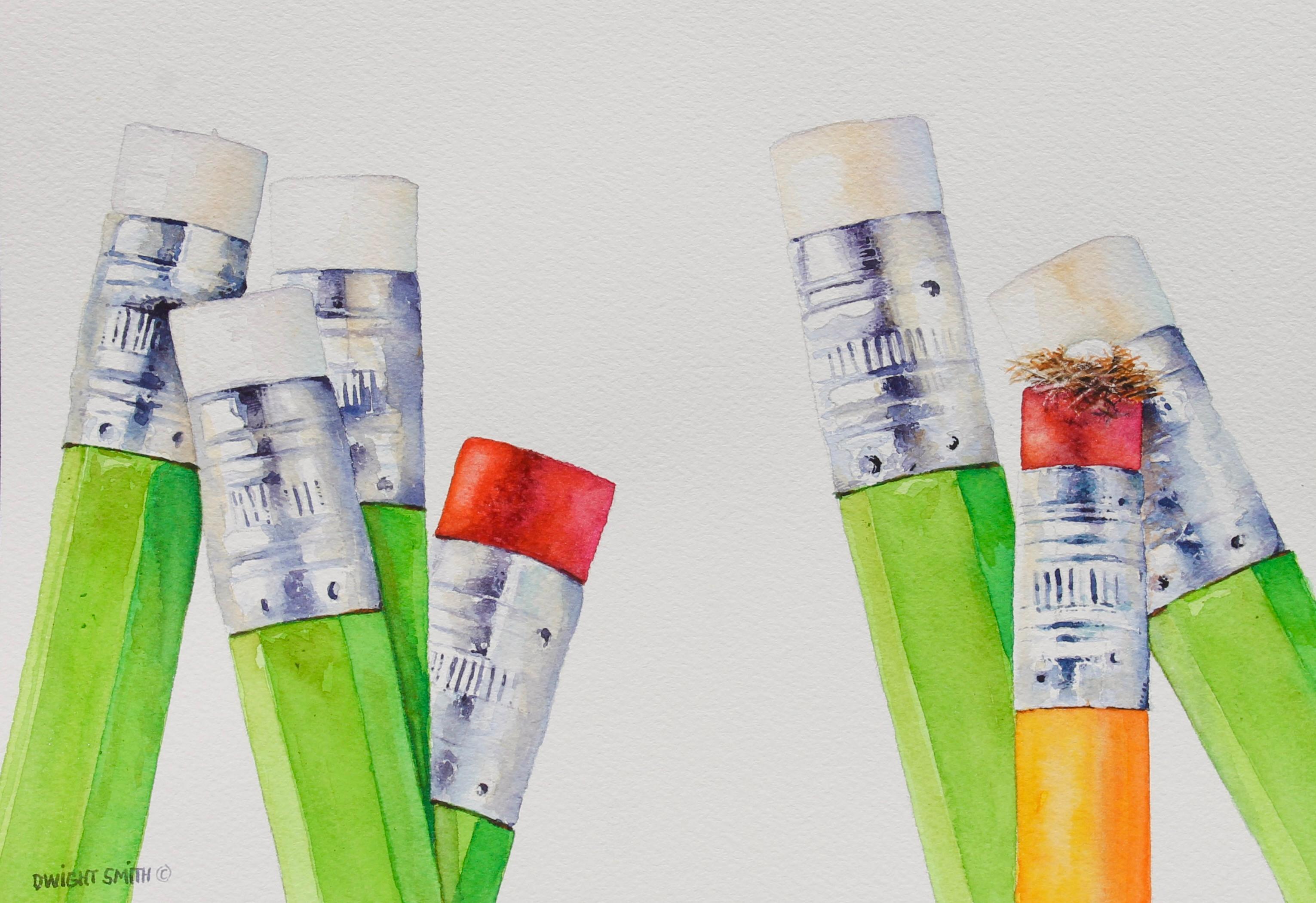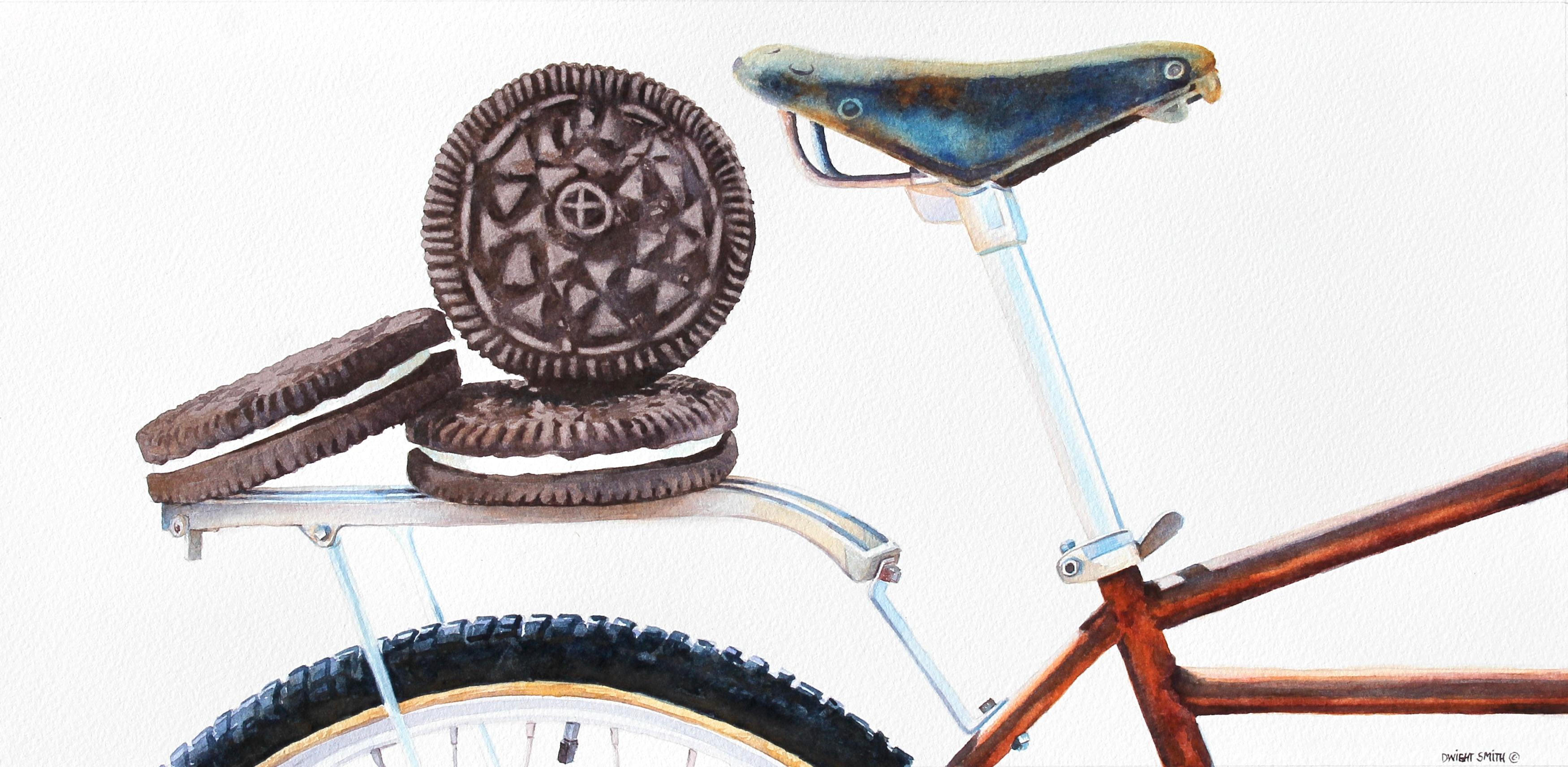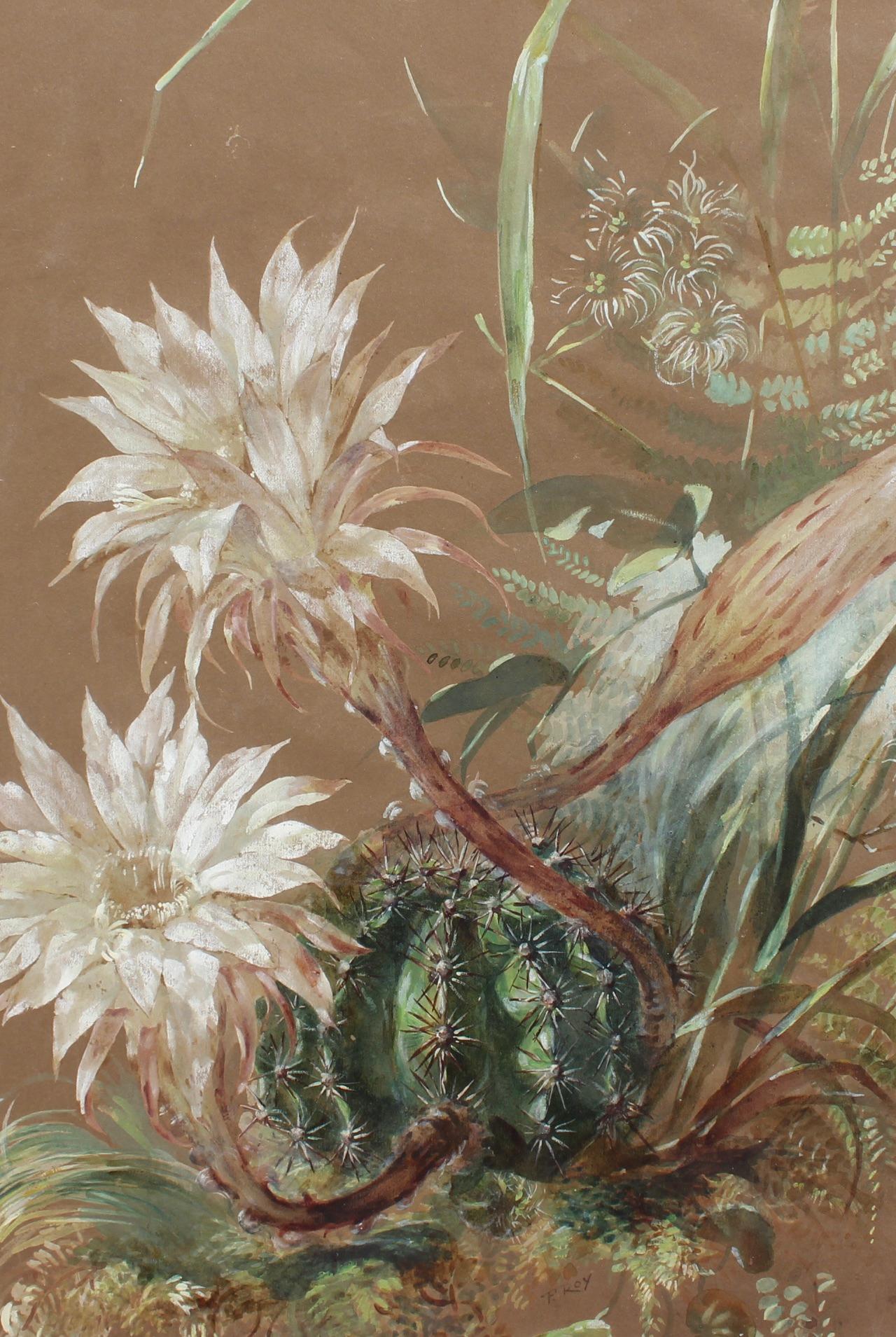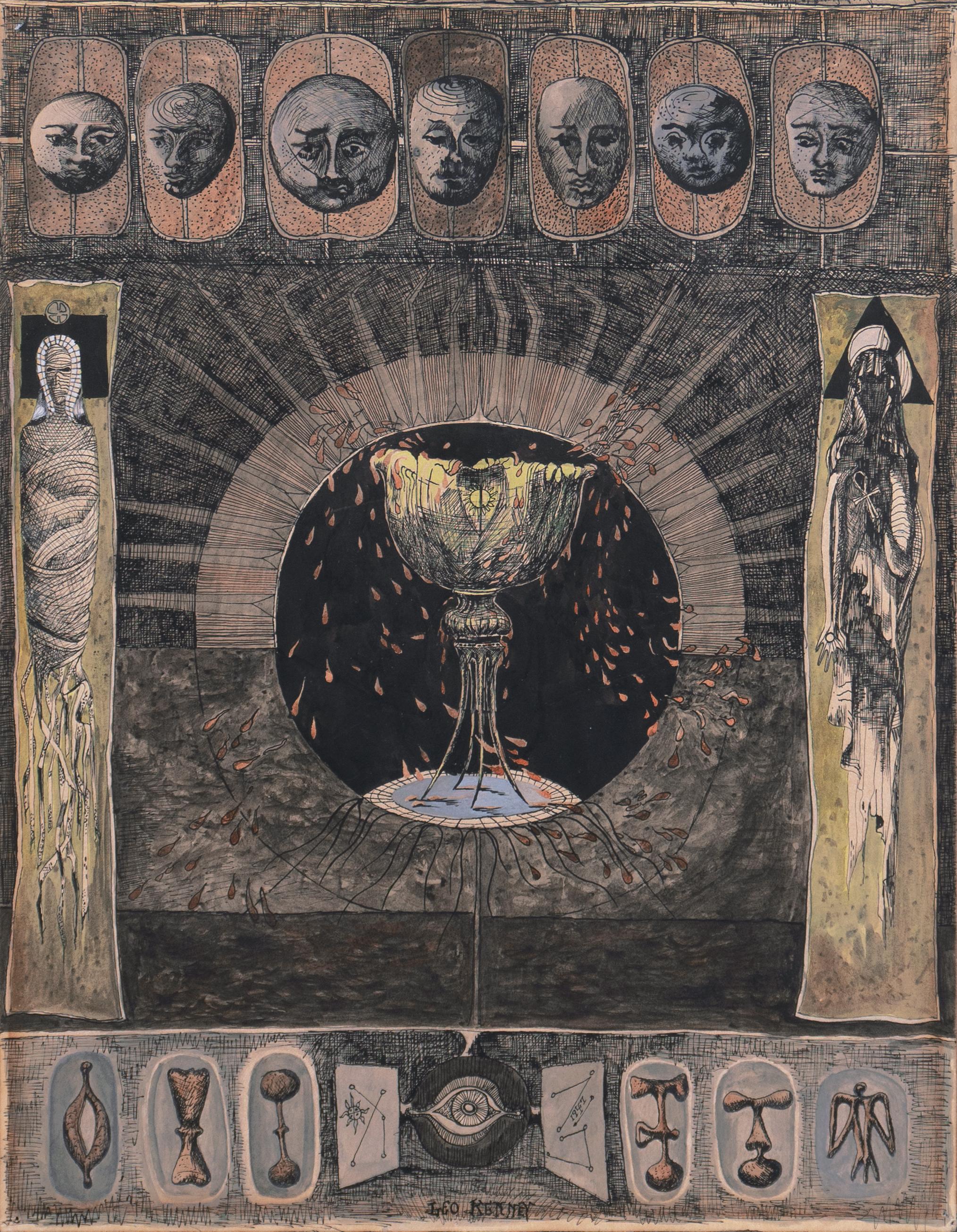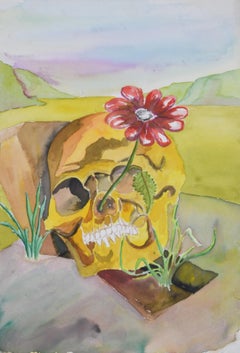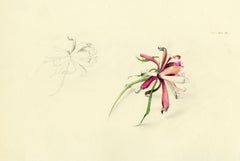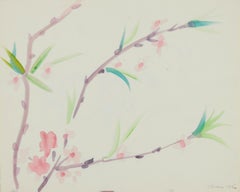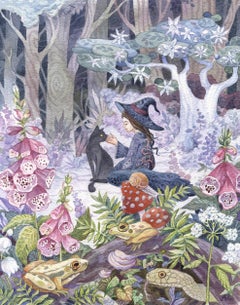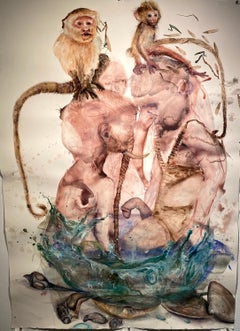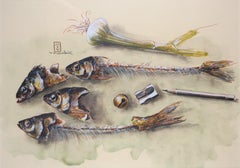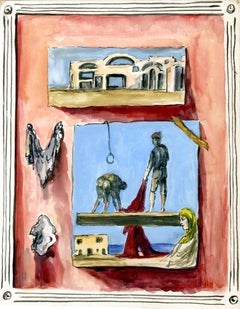
Trompe-l'Oeil Study
View Similar Items
Want more images or videos?
Request additional images or videos from the seller
1 of 9
Eugene BermanTrompe-l'Oeil Study1934
1934
$2,500List Price
About the Item
- Creator:Eugene Berman (1899 - 1972, Russian)
- Creation Year:1934
- Dimensions:Height: 14.75 in (37.47 cm)Width: 11.25 in (28.58 cm)
- Medium:
- Movement & Style:
- Period:
- Condition:Excellent. Fresh colors.
- Gallery Location:Fairlawn, OH
- Reference Number:Seller: FA96481stDibs: LU14012464512
About the Seller
5.0
Recognized Seller
These prestigious sellers are industry leaders and represent the highest echelon for item quality and design.
Gold Seller
Premium sellers maintaining a 4.3+ rating and 24-hour response times
Established in 1978
1stDibs seller since 2013
802 sales on 1stDibs
Associations
International Fine Print Dealers Association
Authenticity Guarantee
In the unlikely event there’s an issue with an item’s authenticity, contact us within 1 year for a full refund. DetailsMoney-Back Guarantee
If your item is not as described, is damaged in transit, or does not arrive, contact us within 7 days for a full refund. Details24-Hour Cancellation
You have a 24-hour grace period in which to reconsider your purchase, with no questions asked.Vetted Professional Sellers
Our world-class sellers must adhere to strict standards for service and quality, maintaining the integrity of our listings.Price-Match Guarantee
If you find that a seller listed the same item for a lower price elsewhere, we’ll match it.Trusted Global Delivery
Our best-in-class carrier network provides specialized shipping options worldwide, including custom delivery.More From This Seller
View AllTrompe-l'Oeil Study
By Eugene Berman
Located in Fairlawn, OH
Trompe-l'Oeil Study
Watercolor on heavy wove paper, 1943
Signed with the artists initials, lower center of image; Dated 1943, lower center of image
Provenance:
Swann Galleries, 2007, realized $2,640
Condition: Excellent. Fresh colors. Framed with conservation glass.
Sheet: 14 3/4 x 11 1/4"
Frame size: 20 3/4 x 17
Berman brothers (painters)
From Wikipedia, the free encyclopedia
Eugene Berman in Italy in the 1960s
Eugène Berman (Russian: Евгений Густавович Берман; 4 November 1899, Saint Petersburg, Russia – 14 December 1972, Rome) and his brother Leonid Berman...
Category
1930s Surrealist Still-life Drawings and Watercolors
Materials
Watercolor
Surrealist landscape with skull and red daisy
By Charles Harris ( Beni Kosh )
Located in Fairlawn, OH
Surrealist landscape with skull and red daisy
Watercolor on paper, 1960-1970
Unsigned
Stamped with the artist's estate stamp verso (see photo)
Provenance: Estate of the artist
Refere...
Category
20th Century Surrealist Still-life Drawings and Watercolors
Materials
Watercolor
Flower Studies
By Mary Spain
Located in Fairlawn, OH
Unsigned
Graphite and colored pencils on laid paper
Category
Mid-20th Century Surrealist Still-life Drawings and Watercolors
Materials
Color Pencil, Graphite
Plum Branches and Flowers
By Joseph O'Sickey
Located in Fairlawn, OH
Plum Branches and Flowers
watercolor on wove paper, 1985
Signed and dated in pencil lower right corner
From the artist's 1985 sketchbook
Inspired by O'Sickey's love of Japanese and Chinese art and calligraphy.
Provenance: Estate of the artist
Condition: Excellent
Image/Sheet size: 13 5/8 x 17 inches
Joseph B. O’Sickey, Painter
1974 CLEVELAND ARTS PRIZE FOR VISUAL ARTS
The title conferred on him by Plain Dealer art critic Steve Litt in a 1994 article, “the dean of painting in northeast Ohio,” must have pleased Joseph O'Sickey. It was more than 30 years since he had burst onto the local (and national) art scene. O’Sickey was already in his 40s in that spring of 1962 when he had his first one-man show at the Akron Art Museum and was signed by New York’s prestigious Seligmann Galleries, founded in 1888. In the decade and a half that followed, he would have seven one-man shows at Seligmann, which had showed the work of such trailblazing figures as Seurat, Vuilliard, Bonnard, Leger and Picasso, and appear in all of the group shows.
O’Sickey took the Best Painting award in the 1962 May Show at the Cleveland Museum of Art (CMA). He and would capture the same honor in back-to-back May Shows in 1964 and ’65, and again in 1967. The remarkable thing, noted the Plain Dealer’s Helen Borsick, was that he accomplished this sweep in a variety of painterly styles, even using that most hackneyed of subjects, flowers. “The subject doesn’t matter,” he told her, “what the artist brings to it is the important thing.” O’Sickey’s garden and landscape paintings were big and bold, eschewing delicate detail in favor of vitality and impact. The great art collector and CMA benefactor Katherine C. White, standing before one of O’Sickey’s vivid garden paintings, compared the sensation to “being pelted with flowers.”
Though he might represent an entire blossom with one or two smudged brush strokes or a stem with a simple sweep of green, O’Sickey rejected the moniker of Impressionist—or Pointillist or Abstract painter or Expressionist. “My work,” he said, “is a direct response to the subject. I believe in fervor and poetic metaphor. I try to make each color and shape visible and identifiable within the context of surrounding colors and shapes. A yellow must hold its unique quality from any another yellow or surrounding color, and yet read as a lemon or an object, by inference. It does not require shading or modeling—the poetic evocation is part of the whole.”
“The subject,” O’Sickey used to tell his students at Kent State University, where he taught painting from 1964 to 1989, “has to be seen as a whole and the painting has to be structured to be seen as a whole.” He liked to think of it as “a process of controlled rapture.”
When, in the 1960s, fond childhood memories drew him to the zoo, he found himself responding to the caged animals in their lonely dignity (or indignity) with sharp-edged, almost silhouette-like forms that evoked Matisse’s paintings and cut-paper assemblages. One observer was left with the impression that the artist had “looked at these animals, past daylight and into dusk when they lose their details in shadow and become pure shapes, with eyes that are seeing the viewer rather than the other way around. This is a world of shape and essence,” wrote Helen Borsick. “All is simplification.”
O’Sickey attributed his ability to capture his subjects with just a few strokes—in an almost iconographic way—to a rigorous exercise he had imposed upon himself over a period of several months. Limiting his tools to a large No. 6 bristle brush and black ink, he set himself the task of drawing his pet parakeet and the other small objects in its cage (cuttlebone, feeding dish, tinkling bell) hundreds of times. The exercise gave him “invaluable insights into painting. . . . Because of the crudity of the medium, every part of these drawings had to be an invention and every mark had to have its room and clarity.” Then he began adding one color at a time—“still with the same brush and striving for the same clarity”—and headed off to the zoo where “the world opened up to me. I learned how little it took to express the subject.”
Born in Detroit at the close of the First World War, O’Sickey grew up in St. Stanislaus parish near East 65th and Fleet on Cleveland’s southeast side. (The apostrophe was inserted into the family’s proud Polish name by a clerk at Ellis Island.) An early interest in drawing and painting may have been kindled by the presence on the walls of Charles Dickens Elementary School, one of only three grade schools in the district with a special focus on the arts, of masterful watercolors by such Cleveland masters as Paul Travis, Frank N. Wilcox and Bill Coombes.
As a youngster O’Sickey took drawing classes at the Cleveland Museum of Art, and he and his brother spent hours copying famous paintings; while a student at East Tech High School in the mid-’30s, he attended free evening classes in life drawing with Travis and Ralph Stoll at the John Huntington Art and Polytechnic Institute, and Saturday classes at the Cleveland School (later the Cleveland Institute) of Art, where he earned his degree in 1940 under the tutelage of Travis, Stoll and such other legendary figures as Henry Keller, Carl Gaertner, William Eastman, Kenneth Bates...
Category
1980s Contemporary Still-life Drawings and Watercolors
Materials
Watercolor
Iris
By Greta Allen
Located in Fairlawn, OH
Iris
Watercolor on paper, c. 1920
Unsigned
Provenance: Estate of the Artist
Condition: Excellent, slight surface dirt
Image/Sheet size: 15 x 10 1/4 inches
Allen was trained in Boston...
Category
20th Century American Impressionist Still-life Drawings and Watercolors
Materials
Watercolor
Homage to Morandi
By Phyllis Sloane
Located in Fairlawn, OH
Homage to Morandi
Watercolor, c. 1990
Signed lower right: Sloane
An important exhibition size watercolor by the artist.
Acquired by the Cleveland Clinic, de-accessed in 2021
Conditio...
Category
1990s Contemporary Still-life Drawings and Watercolors
Materials
Watercolor
You May Also Like
"Foxglove" (2024) By Ania Mohrbacher, Original Fantasy Watercolor Painting
Located in Denver, CO
"Foxglove" (2024) Is an original watercolor fantasy painting, which depicts a young witch and her black cat in the center of a clearing in a forest, rife with magical flora and fauna...
Category
2010s Surrealist Figurative Drawings and Watercolors
Materials
Watercolor, Archival Paper
"Three Medusas, " Eugene Berman, Surrealism, Greek Still Life
By Eugene Berman
Located in New York, NY
Eugene Gustavovitch Berman (1899 - 1972)
Three Medusas, 1968
Watercolor on paper
12 x 9 1/2 inches
Initialed and dated lower right
Provenance:
Larcada Gallery, New York
Frank Oehlsc...
Category
1960s Surrealist Still-life Drawings and Watercolors
Materials
Paper, Watercolor
$4,400 Sale Price
20% Off
Watercolor on paper: )"Monkey at Sea" (elephant nose )
Located in New York, NY
Shiri Mordechay's paintings are a whirlwind of emotion and complexity, drawing the viewer into a vibrant and dynamic world. Each piece is packed with countless details, your eyes are...
Category
2010s Surrealist Figurative Drawings and Watercolors
Materials
Watercolor, Archival Paper
Still life with fish bones, pencil and pencil sharpener / - The irony of art -
Located in Berlin, DE
Manfred K. Schwitteck (*1948), Still life with fish bones, pencil and pencil sharpener, 1992. watercolor over pencil on handmade paper, 31.5 x 45 cm (visible size), 47 x 61 cm (frame...
Category
1990s Surrealist Still-life Drawings and Watercolors
Materials
Etching, Watercolor
"Ziggurat" Large Scale Contemporary Surrealist Still Life (books and ladders)
By Thomas Broadbent
Located in New York, NY
52"x 106" large scale watercolor on paper by award-winning New York artist Thomas Broadbent, signed on reverse. A Contemporary Surrealist Still-life painting of books and papers, wi...
Category
2010s Surrealist Still-life Paintings
Materials
Watercolor, Archival Paper
$14,400 Sale Price
20% Off
"Beyond Reach" Surrealist Still Life Painting of books with ladders
By Thomas Broadbent
Located in New York, NY
Hardbound books in black, orange and yellow are stacked with magazines and soft cover books. In a surreal shift of scale bright orange construction ladders are leaned against the b...
Category
2010s Surrealist Still-life Drawings and Watercolors
Materials
Watercolor, Archival Paper
